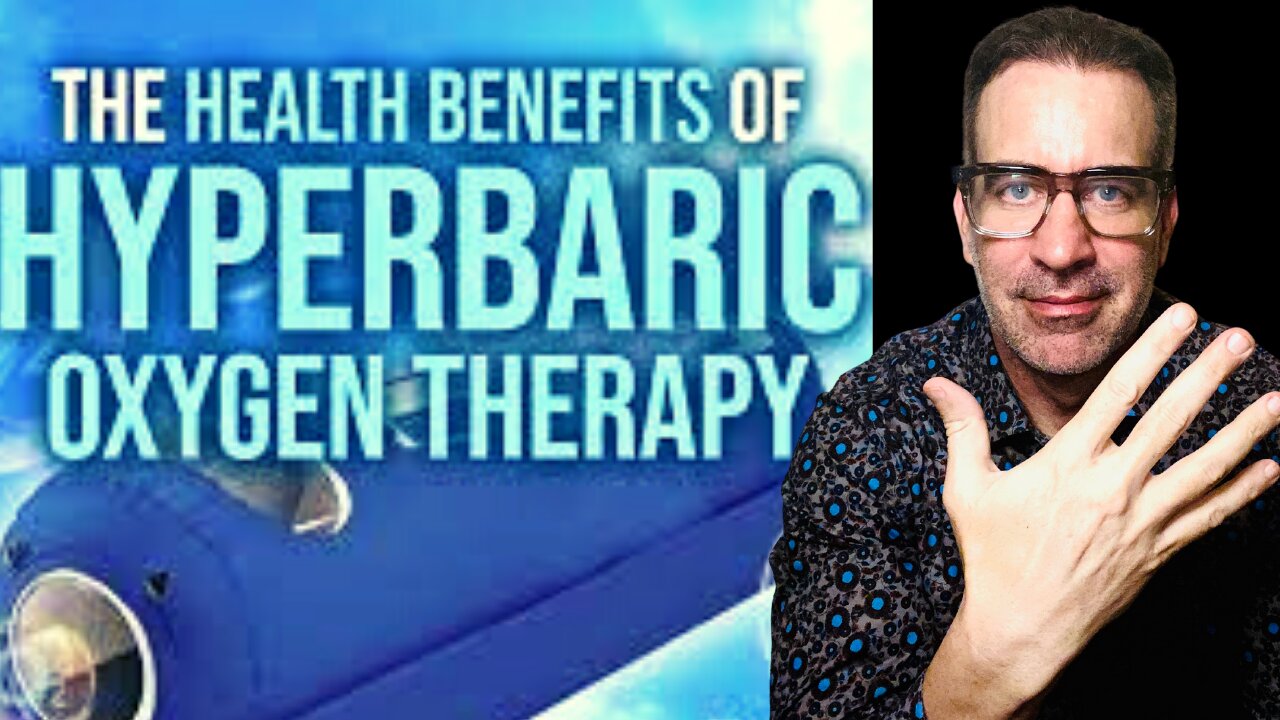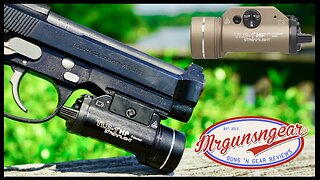Premium Only Content

THE BENEFITS OF HYPERBARIC OXYGEN THERAPY
NUMBER 7 OF MY 44 PEARLS FOR HEALTH & FITNESS!!!
Hyperbaric medicine is a medical treatment in which an ambient pressure greater than sea-level atmospheric pressure is a necessary component. The treatment comprises hyperbaric oxygen therapy (HBOT), the medical use of oxygen at an ambient pressure higher than atmospheric pressure, and therapeutic recompression for decompression illness, intended to reduce the injurious effects of systemic gas bubbles by physically reducing their size and providing improved conditions for the elimination of bubbles and excess dissolved gas.
Two types of HBOT SYSTEMS: HARD AND SOFT! HARD more effective. I use the hard HBOT SYSTEM 2 TIMES A WEEK! 8 PLUS HOURS EACH SESSION
Possible side effects:
Ear Barotrauma
The main side effect reported with hyperbaric medicine is ear discomfort or injury to the increased air pressure. In most cases, this is similar to the pain or discomfort you may experience in a drive through the mountains or the cabin pressure you feel when flying in an airplane. Patients with ear sensitivity may require ear tubes before HBOT treatments.
Oxygen Toxicity
Clinical HBOT treatments work well within the safety limits of oxygen levels and the risk of oxygen toxicity is rare. In cases of oxygen toxicity, seizures can occur. It is more likely to occur in patients with pre-existing seizure disorders or hypoglycemia. If this does occur, the treatment is to simply stop the HBOT therapy and seizures will stop.
Vision Changes
Air pressure changes that occur during HBOT treatments can cause visual changes. These changes are temporary and typically revert to normal once therapy is ended. These changes can include changes in the shape of the eye lens, resulting in worsening myopia, or nearsightedness, but at the same time improves focus on objects near the eye.
Hypoglycemia
Diabetic patients can experience a drop in blood sugar during HBOT treatments. In these cases, Dr. Spiegel and his staff may encourage you to eat before coming in for your treatments and may require regular blood sugar monitoring during treatments.
Sinus or Tooth Squeeze
Because your sinus cavity is made up of air-filled spaces, you can experience pressure changes and discomfort similar to that seen in the ear. In addition, recent dental work can leave air-filled pockets that can also be affected by pressure changes. This pressure can lead to discomfort and possible cracking of teeth.
The equipment required for hyperbaric oxygen treatment consists of a pressure chamber, which may be of rigid or flexible construction and a means of delivering 100% oxygen. Operation is performed to a predetermined schedule by trained personnel who monitor the patient and may adjust the schedule as required. HBOT found early use in the treatment of decompression sickness and has also shown great effectiveness in treating conditions such as gas gangrene and carbon monoxide poisoning. More recent research has examined the possibility that it may also have value for other conditions such as cerebral palsy and multiple sclerosis, but no significant evidence has been found.
Therapeutic recompression is usually also provided in a hyperbaric chamber. It is the definitive treatment for decompression sickness and may also be used to treat arterial gas embolism caused by pulmonary barotrauma of ascent. In emergencies, divers may sometimes be treated by in-water recompression (when a chamber is not available) if suitable diving equipment (to reasonably secure the airway) is available.
A number of hyperbaric treatment schedules have been published over the years for both therapeutic recompression and hyperbaric oxygen therapy for other conditions.
The traditional type of hyperbaric chamber used for therapeutic recompression and HBOT is a rigid shelled pressure vessel. Such chambers can be run at absolute pressures typically about 6 bars (87 psi), 600,000 Pa, or more in special cases.[81] Navies, professional diving organizations, hospitals, and dedicated recompression facilities typically operate these. They range in size from semi-portable, one-patient units to room-sized units that can treat eight or more patients. The larger units may be rated for lower pressures if they are not primarily intended for the treatment of diving injuries.
HBOT is recognized by Medicare in the United States as a reimbursable treatment for 14 UHMS "approved" conditions. A 1-hour HBOT session may cost between $300 and higher in private clinics and over $2,000 in hospitals. U.S. physicians (M.D. or D.O.) may lawfully prescribe HBOT for "off-label" conditions such as stroke,[98][99], and migraine.
Connect on:
Instagram: https://www.instagram.com/themcclonebrothers/
Twitter: https://twitter.com/themcclonebrot1
LinkedIn: https://www.linkedin.com/in/themcclonebrothers/
-
 0:52
0:52
NONCONFORMING-CONFORMIST
1 year agoBuckle Up-Foreclosures
34 -
 LIVE
LIVE
TheManaLord Plays
2 hours agoMANA SUMMIT - DAY 1 ($10,200+) | BANNED PLAYER SMASH MELEE INVITATIONAL
219 watching -

I_Came_With_Fire_Podcast
15 hours agoCarolina Bays: The Lost Cataclysm You've Never Heard Of
18.1K2 -
![Mr & Mrs X - [DS] Trafficking Empire – The Pedo Network Island, The Cover-Up: Part 2 - Ep 6](https://1a-1791.com/video/fww1/f8/s8/1/y/p/x/f/ypxfz.0kob-small-Mr-and-Mrs-X-DS-Trafficking.jpg) 59:56
59:56
X22 Report
20 hours agoMr & Mrs X - [DS] Trafficking Empire – The Pedo Network Island, The Cover-Up: Part 2 - Ep 6
94.9K30 -
 1:03:07
1:03:07
Candace Show Podcast
1 day agoI’M BACK! And STILL Asking Questions (Sorry Brigitte). | Candace Ep 233
127K221 -
 13:13
13:13
Mrgunsngear
20 hours ago $7.41 earnedStreamlight TLR-1 HP Review: Can It Dethrone Surefire?
52.4K11 -
 1:26:34
1:26:34
Man in America
22 hours agoExposing the Cover-Up That Could Collapse Big Medicine: Parasites
105K88 -
 1:12:09
1:12:09
Wendy Bell Radio
9 hours agoPet Talk With The Pet Doc
35.1K48 -
 27:15
27:15
Liberty Hangout
2 days agoThe Most DELUSIONAL Democrats on Earth!
57.1K171 -
 38:41
38:41
JohnXSantos
1 day ago $1.30 earnedHow To Start A CLOTHING BRAND on a BUDGET! Step X Step (2025)
28.7K2